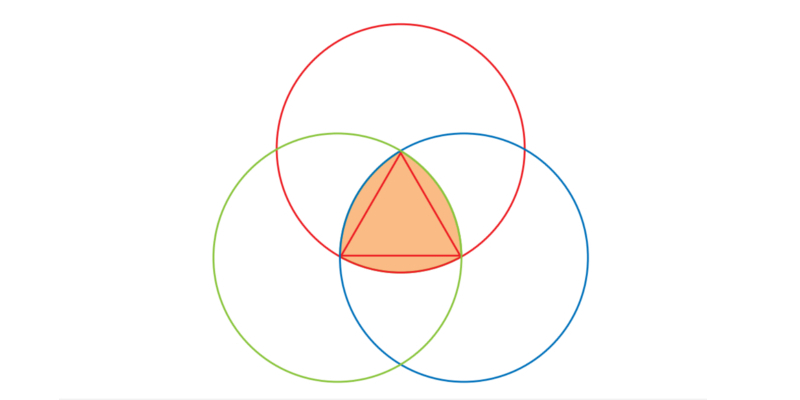REULEAUX TRIANGLE
A constant width flat shape has the following property: whenever two parallel lines just touch the shape enclosing it, the distance between the lines is constant. Besides the circle, the simplest example is the Reuleaux triangle, which we present here.




